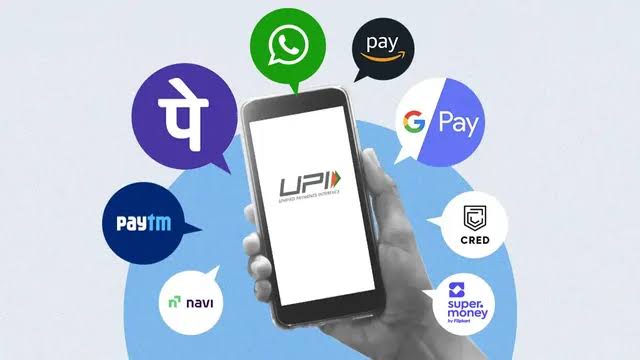UPI Transactions and Charges: What the Finance Ministry’s Clarification Really Means
Short Summary
The Finance Ministry recently clarified rumors about UPI (Unified Payments Interface) transactions being charged. Social media speculation had caused concern, but the Ministry reaffirmed that UPI services remain free for users. However, discussions are ongoing around Merchant Discount Rates (MDR) and funding digital payment infrastructure through alternatives without burdening common users.
Introduction: Is UPI No Longer Free?
If you’ve recently heard the buzz around “UPI charges coming soon,” you’re not alone. Social media platforms went into panic mode as users began speculating that soon, even a simple money transfer might come with a fee attached. Sounds scary, right? Thankfully, the Finance Ministry stepped in with an official clarification to clear the fog.
Let’s break down everything that’s happening behind the scenes—from what sparked the fear to what it means for your next digital payment.
Understanding UPI: The Digital Lifeline of India
UPI isn’t just a fintech buzzword anymore. It’s the backbone of India’s digital payment ecosystem. Whether you’re buying samosas from a street vendor or transferring rent to your landlord, UPI is the go-to option for millions of Indians daily.
- Launched in 2016 by the National Payments Corporation of India (NPCI)
- Over 11 billion transactions per month (as of 2024)
- Powers apps like PhonePe, Google Pay, Paytm, and BHIM
- Free for users. Fast. Seamless. 24/7.
So, when someone says “UPI might get charged,” it hits close to home for pretty much all of us.
What Sparked the Confusion?
The panic started when unverified news began circulating online, suggesting that users might have to start paying a fee for UPI transactions. The rumor was that a new framework under discussion would allow banks or payment apps to levy transaction charges—something unheard of so far.
To be fair, these concerns weren’t pulled from thin air. There were ongoing policy discussions around improving infrastructure funding. But most people misunderstood what those talks were about.
The Finance Ministry’s Clarification
Here’s the Finance Ministry’s official stance in a nutshell:
“UPI is a digital public good with immense convenience for the public & productivity gains for the economy. There is no consideration in Government to levy any charges for UPI services. The concerns of the service providers for cost recovery are being met through other means.”
Let’s unpack that.
- No UPI Charges for Users – You, the user, are safe. Sending ₹100 to your friend will still cost ₹0.
- Public Good Status – The government treats UPI like a national utility. Like roads, electricity, or public broadcasting.
- Cost Recovery for Banks – Yes, banks and payment providers do incur costs. But the government is exploring ways to subsidize or fund these costs without passing the burden to the user.
Why Do Banks Want Compensation?
Now here’s the catch. Even if UPI is “free” for you, it’s not really free to run. Every time a transaction happens:
- Banks need to maintain servers and security.
- NPCI has to handle infrastructure at scale.
- Apps like PhonePe or GPay have to invest in support, tech upgrades, and fraud detection.
These stakeholders make no money directly from peer-to-peer UPI. So the argument is: how long can they offer “free” services without a source of revenue?
And that’s where Merchant Discount Rates (MDR) come in.
What is MDR and Why Does it Matter?
MDR is a small fee that merchants pay when accepting payments through digital means—traditionally applicable to debit/credit cards.
When UPI was introduced, the government waived MDR to accelerate adoption. That worked brilliantly. But now, the infrastructure has grown massively, and someone has to foot the bill.
Currently:
- MDR on UPI = Zero
- But banks and PSPs are asking: Should there be a model where merchants pay?
Important point: this doesn’t mean you as a regular user would pay. It would be merchant-facing—possibly for large businesses, not your neighborhood tea stall.
How Are Other Countries Handling It?
Let’s zoom out a bit. Digital payments are global, and India’s UPI is one of the best in the world. But elsewhere?
- US: Venmo or Zelle often charge small fees for instant transfers.
- Europe: Bank-to-bank payments are often free, but credit cards always carry processing fees.
- China’s WeChat Pay or Alipay: Monetized through ecosystem integrations.
India stands out for its scale and being free. But whether that’s financially sustainable long-term remains the key question.
What Could Happen in the Future?
The Finance Ministry has made it clear: UPI will remain free—for now. But it also said that alternative mechanisms to recover costs are in the works. So, what could that look like?
Possible Scenarios:
- Govt Incentives to Banks – Continue offering direct subsidies to support digital infra.
- Tiered MDR for Businesses – Small shops = no charge. Big merchants = nominal fee.
- Premium Features – Payment apps may roll out advanced features (analytics, reports, API integrations) for businesses at a cost.
- Cross-border UPI Monetization – Monetize UPI use in countries like Singapore, UAE, etc.
Impact on Users: What Should You Expect?
Let’s be real: people use UPI because it’s free, fast, and super convenient. Adding charges—even small ones—could seriously affect usage.
But so far:
- Peer-to-peer transactions will stay free.
- Merchant payments may change down the line.
- No impact for daily users like you and me (unless you’re a business).
Still, always keep an eye on your payment app updates and T&Cs. Companies might introduce features that come with fees, though basic UPI won’t be touched for now.
Conclusion: UPI Isn’t Going Anywhere (Or Charging You Yet)
UPI has revolutionized the way Indians handle money. It’s the kind of fintech success story other countries envy. And despite all the noise online, you’re still not going to be charged for sending money to a friend or buying groceries via UPI.
Sure, conversations are happening around who funds the infrastructure and how businesses play into the ecosystem. But as a regular user? You can continue tapping, scanning, and paying—worry-free.
The government gets it. The Finance Ministry’s message is clear: UPI is here to stay, and it’s staying free.
Frequently Asked Questions (FAQs)
1. Will I be charged for sending money through UPI?
No. The Finance Ministry has confirmed that UPI transactions for users remain completely free.
2. What about paying merchants via UPI—will that cost me?
As of now, even merchant payments are free for users. Future MDR policies might target merchants, not customers.
3. Why are people saying UPI will have fees?
Misunderstood reports and policy discussions triggered speculation. But official sources have clarified the facts.
4. How does the government plan to support UPI infrastructure?
By exploring other funding mechanisms like bank subsidies, business-focused MDR, or monetization outside India.
5. Will using apps like Google Pay or PhonePe be affected?
No changes for basic transactions. But new premium or business-specific features may involve charges in the future.




